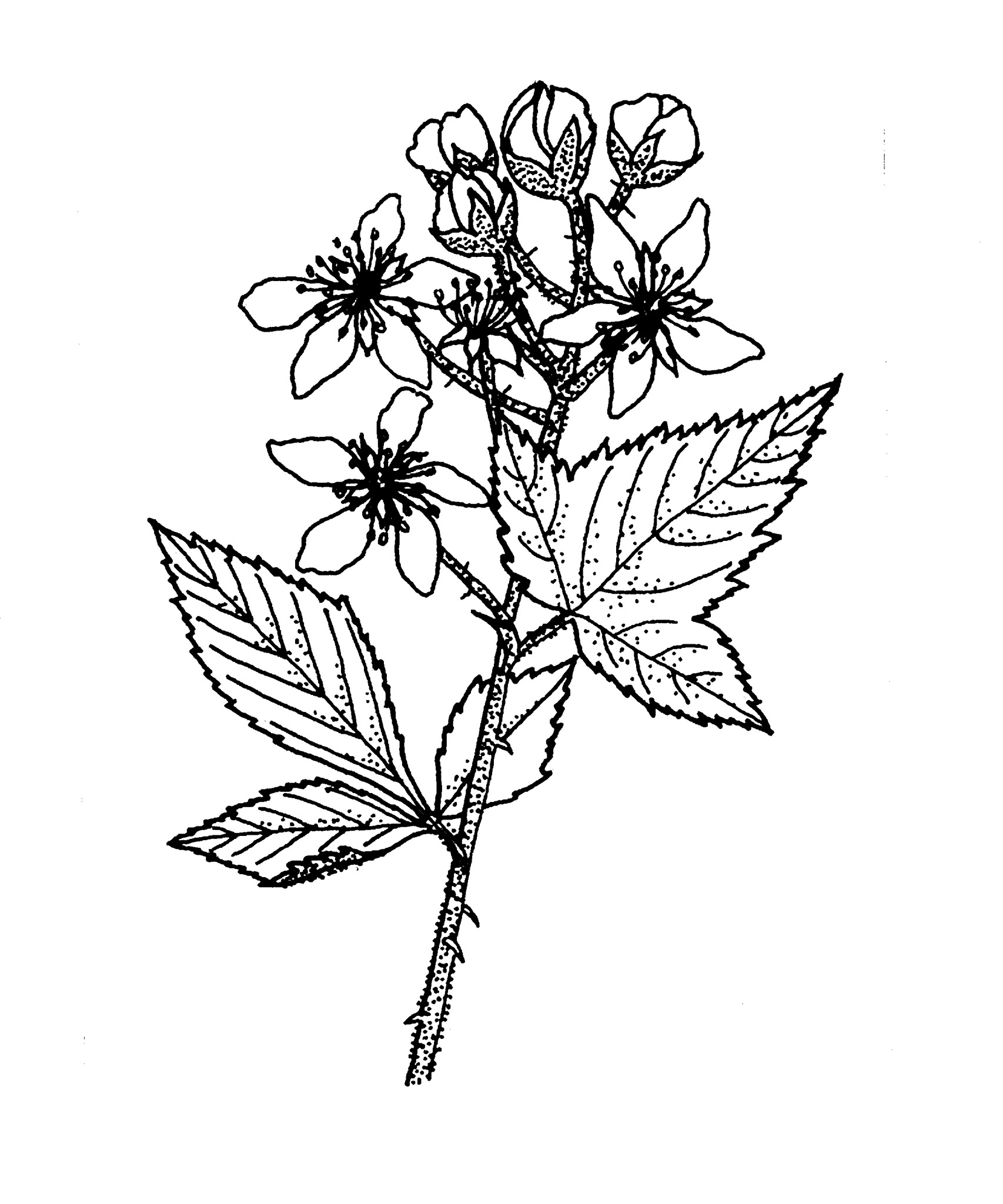
Classical name.
Erect to trailing shrubs generally with prickles on most parts. First year growths are called 'primocanes' and do not bear flowers. In the second year axillary canes appear that bear flowers followed by fruit (as well as different leaf forms) - these are known as 'floricanes'. Leaves deciduous or evergreen, entire, lobed or divided into 3 or more leaflets, each of these toothed or lobed in turn; stipules present and mostly conspicuous but sometimes shed early. Flowers solitary or in clusters, mostly bisexual. Sepals 4, 5 or more. Petals 4, 5 or more, varying from white to pink, red or purple. Stamens numerous. Ovary superior. Carpels 5 to many, free, borne on a swollen, generally conical receptacle. Fruit a berry of fleshy drupelets that may separate from the receptacle or fall with it.
Grown ornamentally for the flowers, fruits and attractive canes, and commercially for the edible berries.
Commercial berries are the result of crosses between blackberries and other cane fruits, mostly raspberries, which give a range of flavours and a long picking season. Hybridisation of blackberries and raspberries occurred first in the 19th century and has resulted in many popular fruits, including the Loganberry, Boysenberry, Youngberry and others. New cultivars are constantly being superseded as improvements are made through breeding and selection. Thornless blackberry cultivars have been derived largely from Rubus 'Merton Thornless'.
Many species are apomictic and Australia has about 13 naturalised species.
Probably about 250 species, mostly northern but more or less cosmopolitan except for the tropics and dry areas (Australia has 7 native species).
Tip layering and division, evergreen species by softwood cuttings, deciduous species by softwood and hardwood cuttings.
Many of the fruits are edible and in some species these are produced commercially, notably the raspberries, loganberries boysenberries, youngberries and lawtonberries.
Fruit a characteristic berry of many fleshy drupelets (raspberry-like).
Jennings (1998), McGregor (1998).
Source: (2002). Rosaceae. In: . Horticultural Flora of South-eastern Australia. Volume 3. Flowering plants. Dicotyledons. Part 2. The identification of garden and cultivated plants. University of New South Wales Press.

These are essentially Blackberry hybrids. In addition to those listed below are 'Lawton', 'Mammoth', 'Silvanberry', 'Smoothstem' and 'Tayberry'.
A large, purple-fruited mid-season berry. An American hybrid, possibly between a Loganberry and a Wild Blackberry.
A conical-fruited mid-season berry. A hybrid raised by Judge J.H. Logan of California in 1881 as a cross, R. idaeus × R. ursinus.
A Blackberry of complex parentage including 'Himalayan Giant', Black Loganberry and Youngberry. Grows well in the Pacific nwusa.
One of the earliest ripening blackberries, with thorny canes and heavy crops of flavoursome dark purple fruit. It was raised in Australia from seed from Corvallis, Oregon, and is a cross between 'Marion' and a numbered Boysenberry seedling.
Raised c. 1905 by b.m. Young of Morgan City, Louisiana, as a cross between 'Phenomenal' and 'Austin Mayes'.